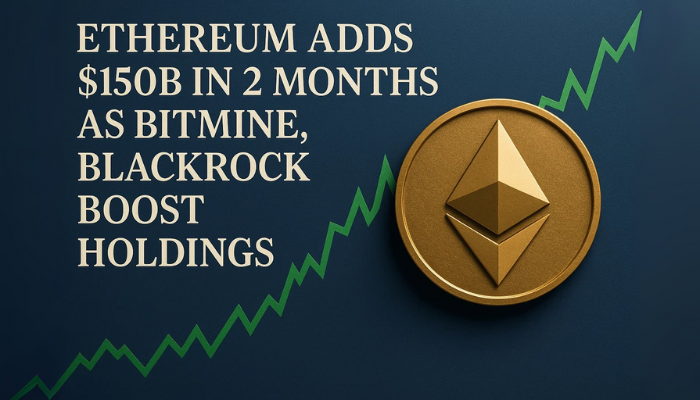Ethereum Enters Trustware Era with Potential to Hit $15,800 by 2028
Ethereum is stepping into a new phase dubbed the “Trustware Era,” marked by increased adoption of advanced security layers for decentralized

Quick overview
- Ethereum is entering the 'Trustware Era,' focusing on advanced security layers for decentralized applications.
- The Trustware framework aims to enhance confidence in smart contracts, attracting institutional and enterprise users.
- ConsenSys projects Ethereum's value could reach $15,800 per ETH by 2028 with robust adoption of Trustware.
- Major brands are already exploring Trustware components to build secure Web3 applications, indicating growing enterprise interest.
Ethereum is stepping into a new phase dubbed the “Trustware Era,” marked by increased adoption of advanced security layers for decentralized applications.

Backed by ConsenSys research, the shift is expected to drive significant growth in both network usage and value over the coming years.
Trustware refers to middleware that undergoes rigorous security protocols before being deployed, allowing developers to trust third-party services with minimized risk. This enhanced confidence in smart contracts and decentralized infrastructure has helped Ethereum strengthen its appeal among institutional and enterprise users. By offering vetted SDKs, composable layers, and verified APIs, Trustware aims to reduce vulnerabilities that have previously deterred large-scale participation.
According to ConsenSys, this transformation could pave the way for a substantial increase in Ethereum’s valuation. Their projection analyses show a path to $15,800 per ETH by 2028 if the Trustware framework attracts robust developer, consumer, and corporate engagement. These models factor in stronger migration from centralized systems, increased on-chain transactions, and the monetization of secure, decentralized services.
Enterprise interest is already becoming visible. Major brands and financial institutions are exploring the deployment of Trustware components to build secure Web3 applications. This includes token gating, identity tools, and settlement logic built on pre-audited modules. The result is a more secure, modular Ethereum ecosystem that can balance innovation and compliance.
Trustware helps align Ethereum’s development with regulatory expectations by documenting and verifying key network elements. Brokers and financial professionals should recognize how this explains growing confidence among institutions. A more secure and standardized Ethereum infrastructure could unlock larger inflows through ETFs, institutional wallets, and crypto custody providers.
It is important to remember that this outlook assumes broad uptake of Trustware protocols and widespread infrastructure integration. Delays in standards, regulatory compliance hurdles, or competition from alternative platforms remain potential challenges. Yet, the Trustware model provides a compelling framework for evaluating Ethereum’s growth potential beyond speculative price gains.
Furthermore, the emergence of Trustware provides a solid catalyst in Ethereum’s narrative. By merging developer-led innovation with enterprise-grade security, it enhances the case for ETH as both a technology and financial asset. Tracking this evolution could help shape effective investment strategies in the evolving crypto landscape.
- Check out our free forex signals
- Follow the top economic events on FX Leaders economic calendar
- Trade better, discover more Forex Trading Strategies
- Open a FREE Trading Account


